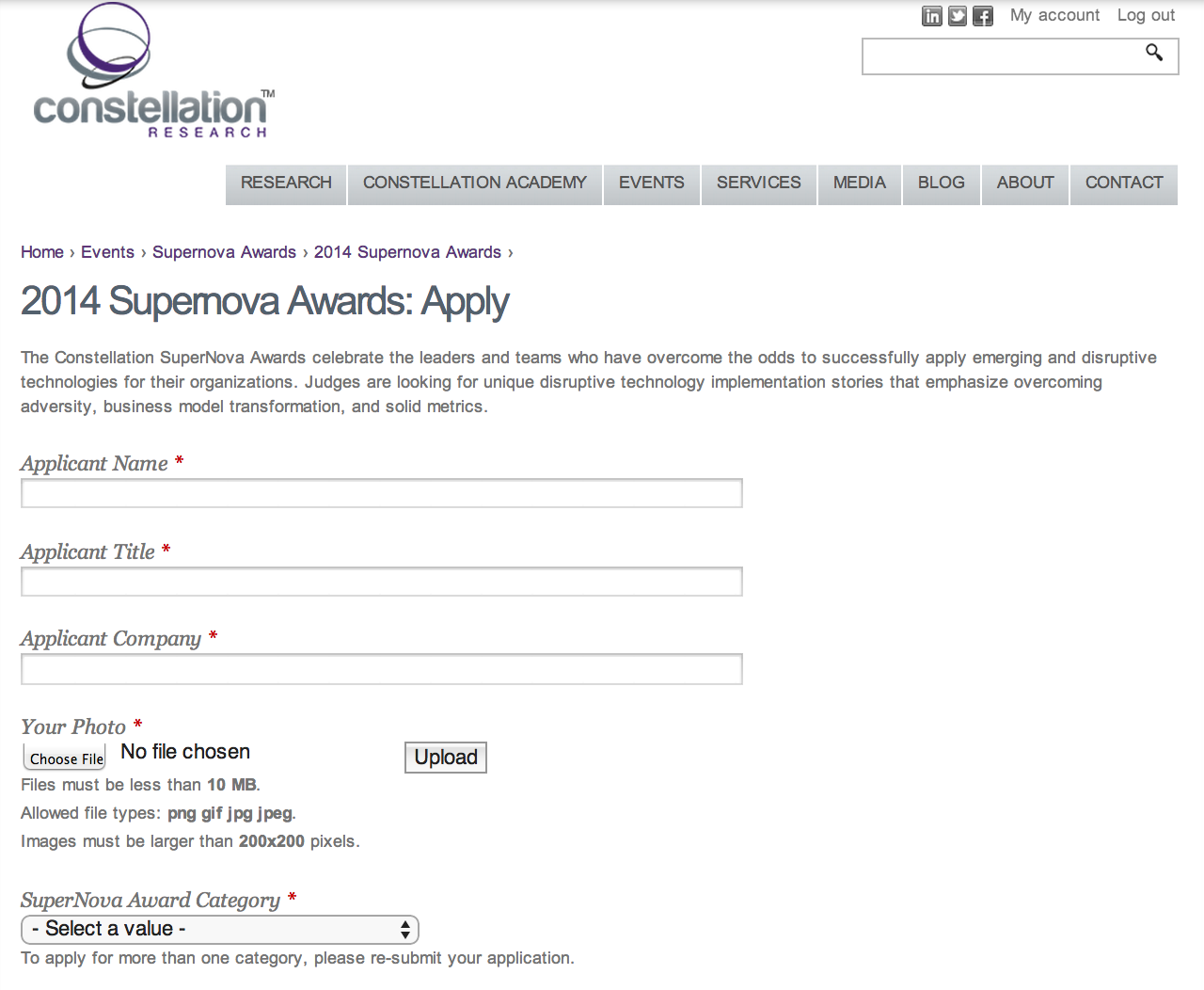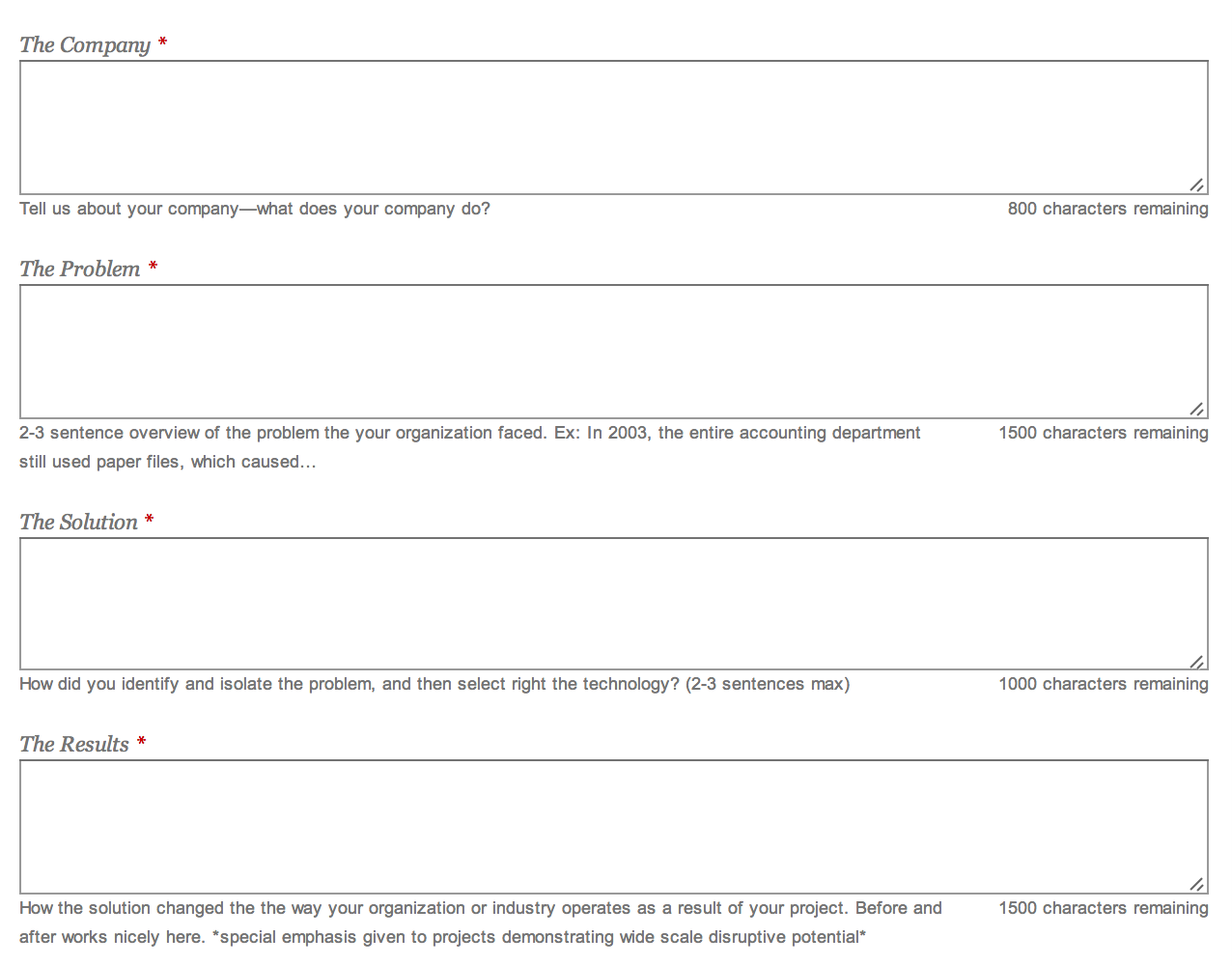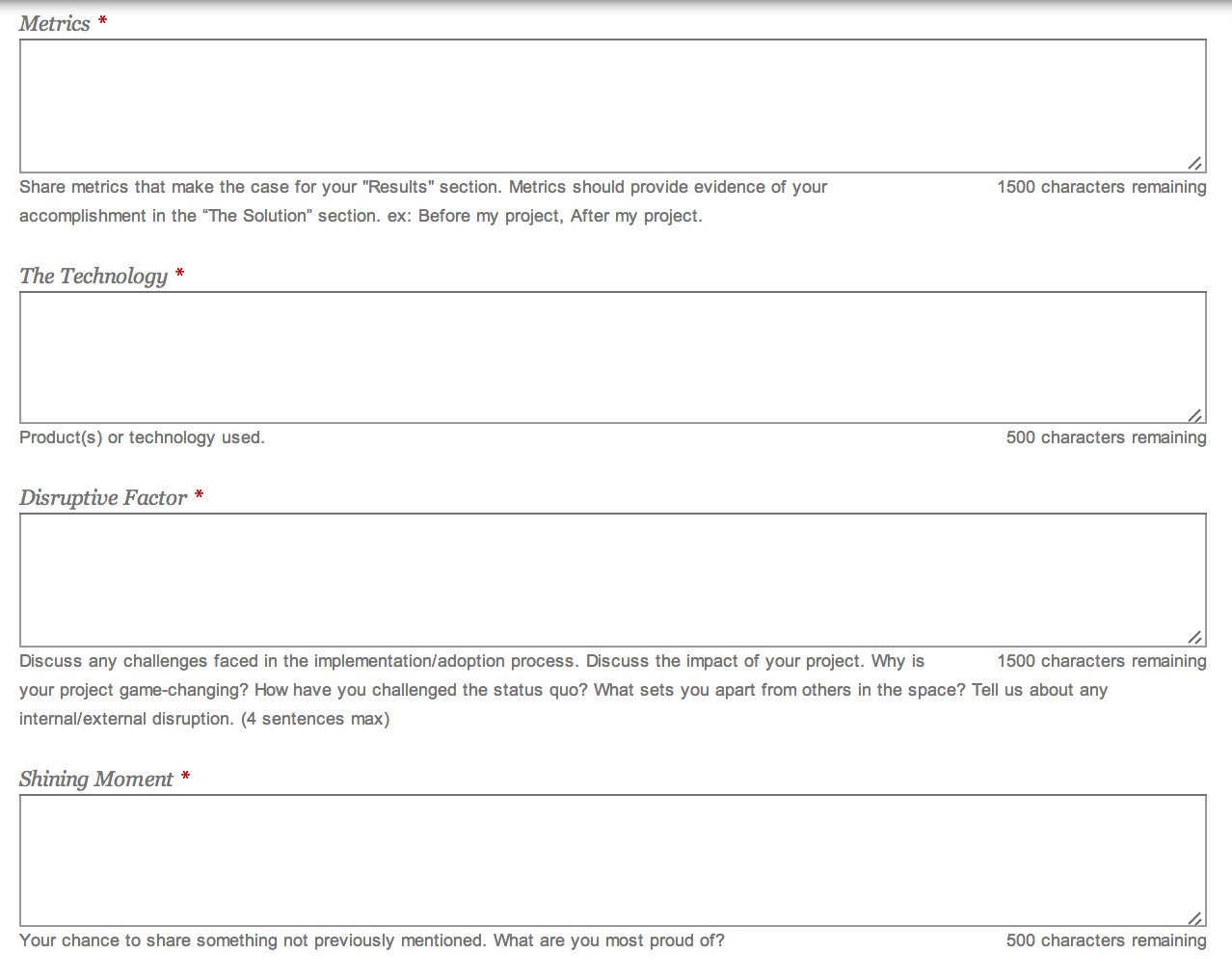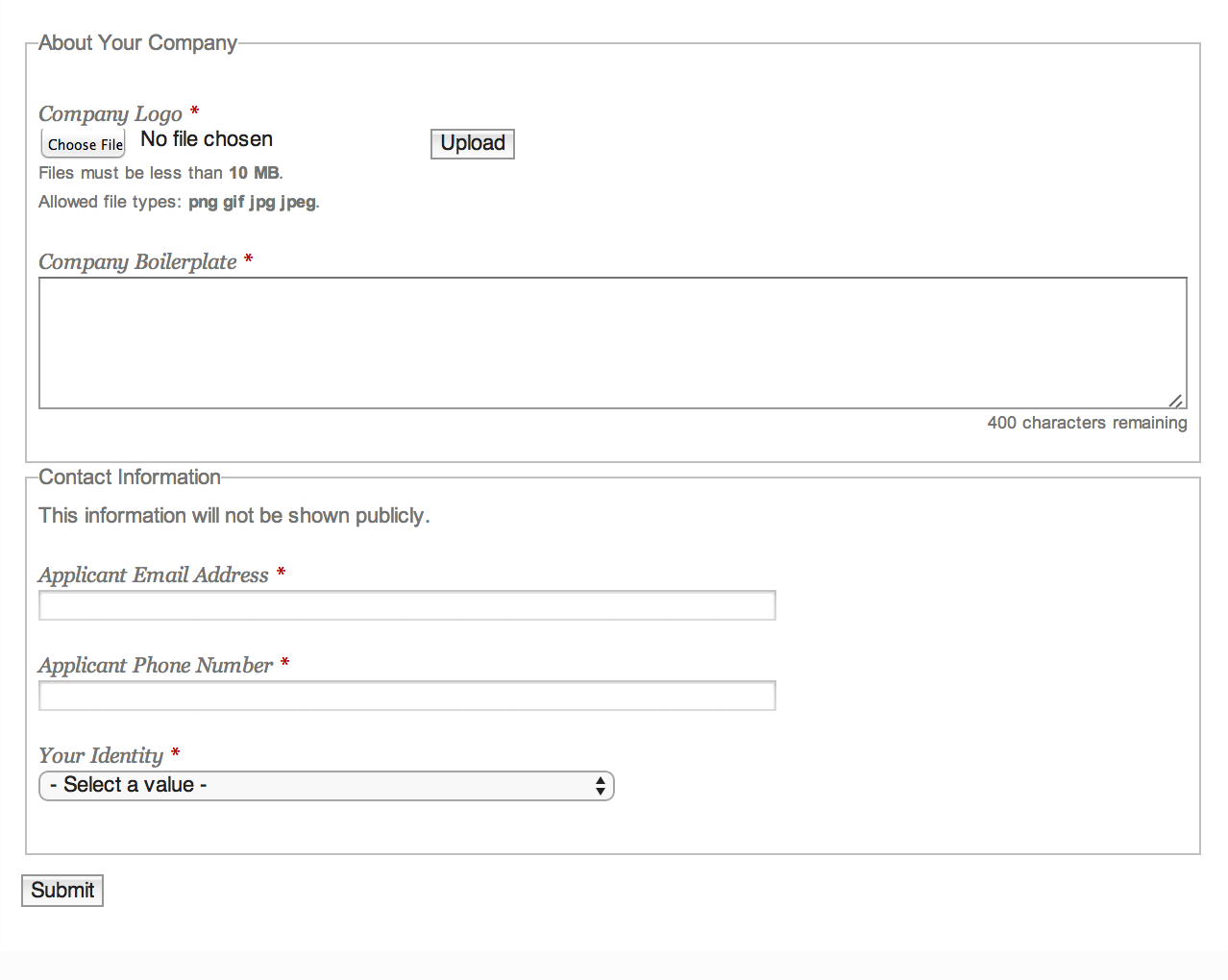This is the first in a series of posts designed to help you submit your best SuperNova Award application.
In this post we'll show you the elements of the SuperNova Award application, and provide a checklist of information you need to submit your application. Once you have all your data, the application should only take about five minutes to complete.
To get started, navigate to the SuperNova Award application, and log in or create a Constellation account.
Remember that if selected to advance to the finalist round, your application will be made public on the Constellation website.
SuperNova Award Application
Section I

Applicant Name
Applicant Title
Applicant Company
Your Photo (headshot)
SuperNova Award Category (select one)
- AI and Augmented Humanity - bestows awards for organizations, teams and individuals who apply machines that possess the intelligence and learning capabilities of humans to transform their businesses or mission. This category also includes solutions that address the issues of digital and AI ethics, and the impact of AI on society.
- Data to Decisions - grants recognition to organizations, teams, and individuals employing data to make informed business decisions. (big data, predictive analytics)
- Digital Safety, Governance, and Privacy - spotlights organizations, teams and individuals that support policies and technologies to manage how personal information is used, strategies for effective compliance, and privacy best practices.
- ESG and Sustainability - demonstrates how organizations address environmental, social and governance challenges and sustainability using technologies including, but not limited to, ESG-related metrics reporting, analysis and planning solutions and ESG-related enablement solutions. “E” solutions address carbon, water, waste management and material sourcing. “S” solutions address diversity, equity, inclusion, labor relations and community relations. “G” solutions examine leadership and board governance, risk, compliance, audits, internal controls, and stakeholder rights.
- Future of Work: Employee Experience - determines organizations, teams and individuals that deliver the best possible employee experience as a means to maximize wellness and productivity using tools that support the future of work and people analytics.
- Future of Work: Human Capital Management - identifies organizations, teams and individuals that view the workforce as a competitive asset and applies technologies to gain competitive advantage and improve employee effectiveness. Key technologies include talent management, recruiting, benefits, payroll, and core HR.
- Marketing & Sales Effectiveness - recognizes organizations, teams and individuals evolving marketing operations and strategies to transform campaign-driven points of engagement into comprehensive growth-focused marketing machines. This includes championing marketing and omnichannel engagement technologies to deploy proactive, contextual experiences while aggregating rich customer insights to inform corporate engagement strategies. Technologies being deployed may include marketing automation, advanced analytics, revenue exploration and allocation optimization, advertising, social, video, and mobile relationship drivers, and dynamic digital asset management solutions.
- Next-Generation Customer Experience - recognizes organizations, teams and individuals that are transforming their operations to simultaneously improve business performance and customer experience. This includes accurately identifying customer intent and shaping interactions to make it easy for customers to buy and do business. Critical technologies include CPQ, sales enablement platforms, sales performance management, mass personalization, journey orchestration, CRM, and field and customer service management to build win-win relationships.
- Tech Optimization and Modernization - shows how organizations, teams and individuals reduce technical debt to fund innovation using technologies such as but not limited to cloud computing, back office efficiencies, RPA and process mining, licensing optimization, ERP, integration, and others.
Section II

The Company (800 characters)
Tell us about your company. What does your company do?
The Problem (1000 characters)
Tell us about the business problem your organization faced.
The Solution (1000 characters)
How did you identify the problem, select the right technology, and resolve the problem?
The Results (1500 characters)
How did the implementation of the solution you selected change the way your organization operates? Did your implementation create a wider shift in the way business is conducted across your industry? Before and after works nicely here. Special attention given to projects demonstrating industry-wide disruptive potential.
Section III

Metrics (1500 characters)
Share the metrics that provide evidence for your "Results" section. Judges prefer solid metrics that demonstrate ROI, business model transformation, etc.
The Technology (500 characters)
Product(s) or technology used. Keep this simple. Just the name of the solution works.
Disruptive Factor (1500 characters)
Discuss any challenges faced in the implementation/adoption process. Discuss the impact of your project on your organization and (if applicable) on your industry. Have you changed the status quo? What sets you apart from other technology leaders?
Shining Moment (500 characters)
Share something fun or interesting about your project. Did you receive any other awards or recognition?
Section IV

Company Logo
Company Boilerplate
Contact Information (will not be displayed publicly)
Applicant email address
Applicant phone number
Your identity (are you submitting on behalf of yourself or someone else?)
Done!
Resources:
- SuperNova Award application
